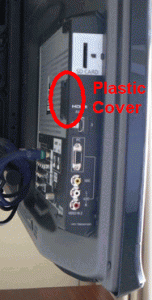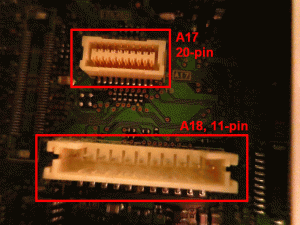This is going to be a bittersweet update for many of you. The good news is that PMCv1 is nearing production! The bad news is that I have not yet been able to get quotes to support my initial pricing goals, so the price of these first PMCv1 units has gone up, as I feared in an update earlier this year. This is why it has been three weeks since my last update; I have been trying to find ways to reduce the cost. This update reports where I’m at today, and my plan moving forward.
Why The Cost Increase?
Since I began the PMCv1 several months ago, I have had a great many people contact me from around the globe expressing their interest in the PMCv1. While such international interest is exciting, it didn’t take me long to realize that my initial plans to build a few, by myself, by hand, just wasn’t going to cut it. I already have a 9-5 day job, and just don’t have the free time to be soldering PMCv1 boards together every night! I will need to go straight to the custom board design even for the first units.
So immediately the cost went way up. My initial hopes to have someone build a couple dozen units was going to cost me some 6 times more than my original price target! So I went back and asked for quotes of higher quantities.. Pushing my initial order from 30pcs to 100pcs dropped the per-piece price tremendously, but it is still going to cost me twice my original price target.. boo. At the end of the day, if my cost doubles, I have to pass that along. Likewise if my cost drops in the future, I can pass that along too. If I had enough capital to purchase 300-500 units in the first run, maybe that would have hit my initial price target. I just don’t have that much money to spend up-front.
Preliminary Pricing
This pricing information is still preliminary. I am still waiting for two last quotes to be updated. There is a chance that one of these quotes will drop the price of the PMCv1. If not, however, then the numbers in my spreadsheet are pretty clear.
Preliminary PMCv1 is USD$60/each. Shipping to USA will remain free (USPS Flat Rate Padded Envelope). International shipping is TBD.
Preliminary Availability
I hope to have the last two quotes returned back to me this week. My original plan was to spend February getting cost estimates so that I can move forward. That is largely on-track. So the plan continues to be that near the end of February, I’ll finalize all my costs and place the first order of 100 PMCv1 units.
The first PMCv1 units will then arrive some 4-6 weeks after I place the order, during which time I will be working on a PMCv1 test fixture. Since I’ll have so many of them now, I need a way to test them quickly and reliably. I cannot afford to sell PMCv1’s that don’t work! And 100pcs is far too many to be plugging in to the back of my TV. So I’m going to adapt one PMCv1 unit with some custom software to test all the other units. This one unit will act like a Panasonic Plasma television to each unit, and will pretend to be a TV turning on and off, with various different values “in memory” to properly test the functionality of the PMCv1 modules, including the “undo” switch and LEDs — cool, huh?
The first PMCv1 should ship in April.
Purchasing Method (USA)
I will be opening a PayPal Business account to handle PMCv1 sales. The preliminary pricing above is based upon a direct purchase using a “Buy Now” button on this website.
PMCv1 ordering should open in March.
Purchasing Method (International)
I am considering using eBay’s International Shipping Program for international sales. The up-side to this approach is that it becomes MUCH easier for me to get these units shipped around the world without having to know all the details about each country’s customs and import laws. The downside to this approach is that as with production costs, every dollar more that it costs me, I have to pass along to the buyer. eBay charges 10% final value fee plus whatever their international shipping program costs. So eBay customers will have to pay about $6-10 extra to handle the additional fees.
If any of you have any other ideas for international customers, please let me know!
What’s Next?
From here the plan is simple:
- Pray for a miracle on the last two outstanding quotes
- Finalize the total cost spreadsheet for a 100-piece order
- Place order for 100 PMCv1 units (ouch!)
- Setup PayPal Business account
- Start working on a custom PMCv1 “Test Fixture” to test each unit before it ships
Stay warm,
..dane


